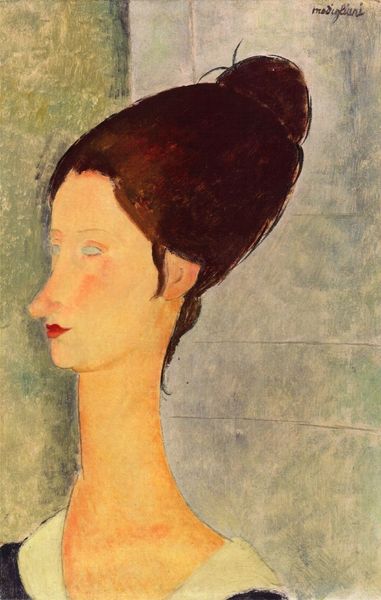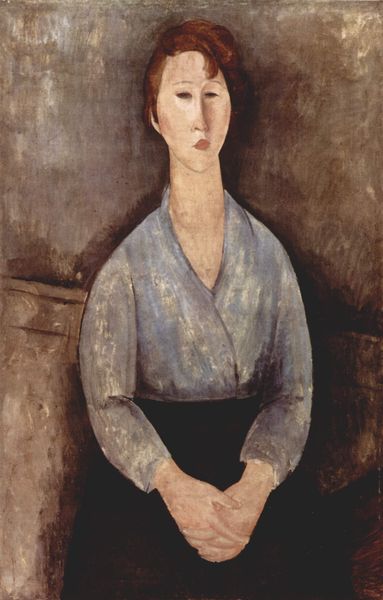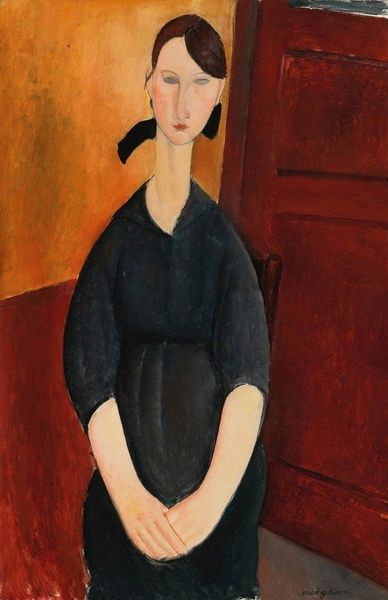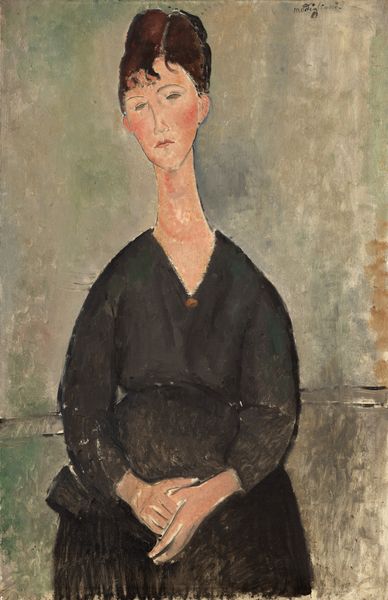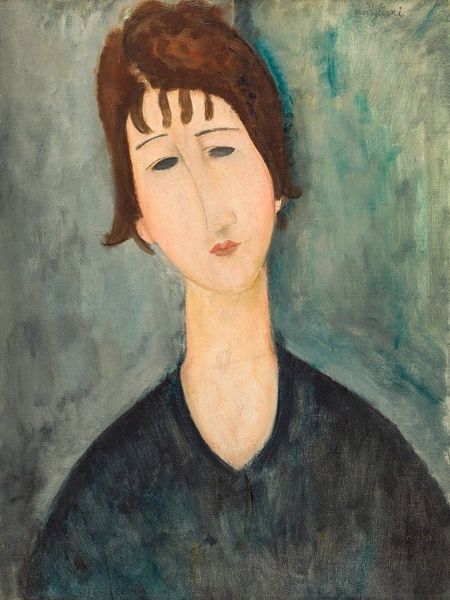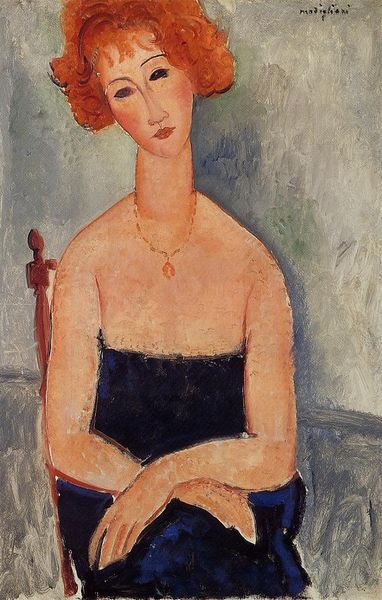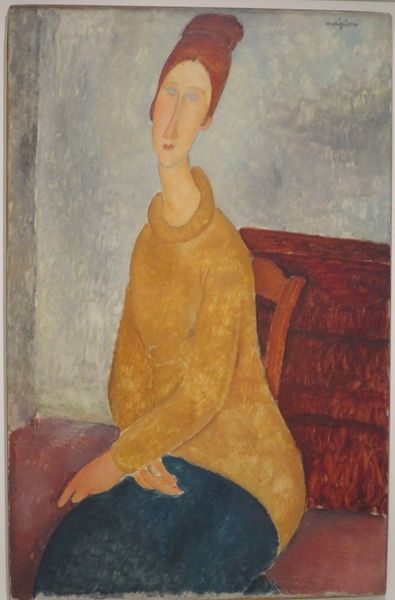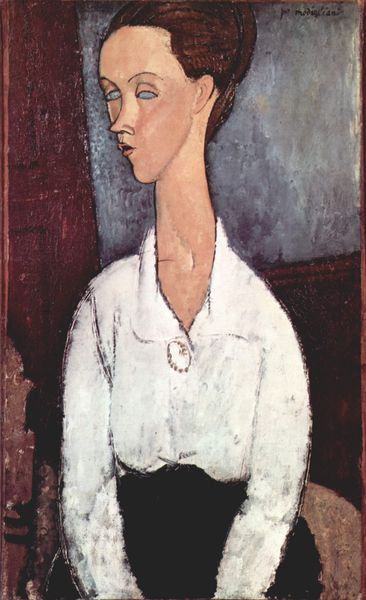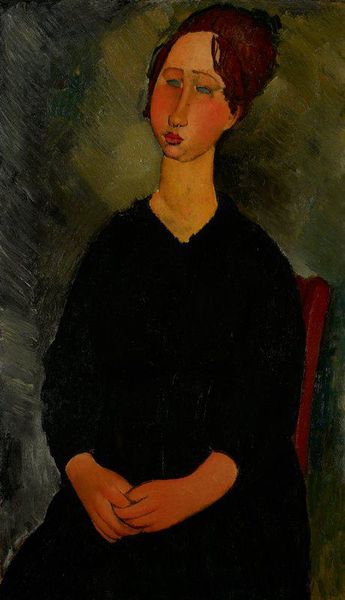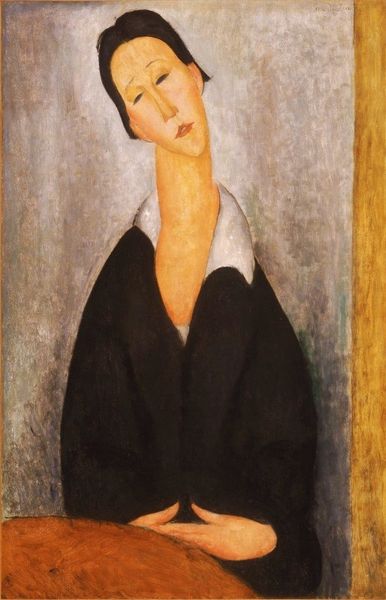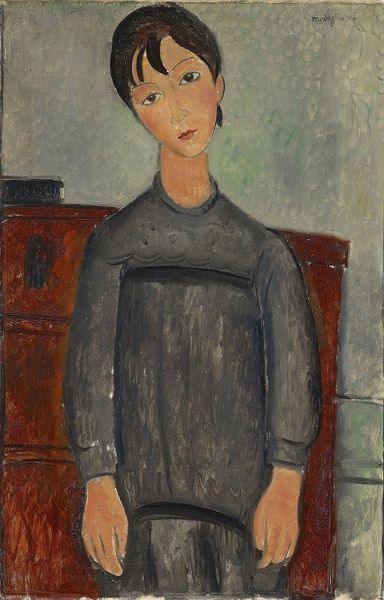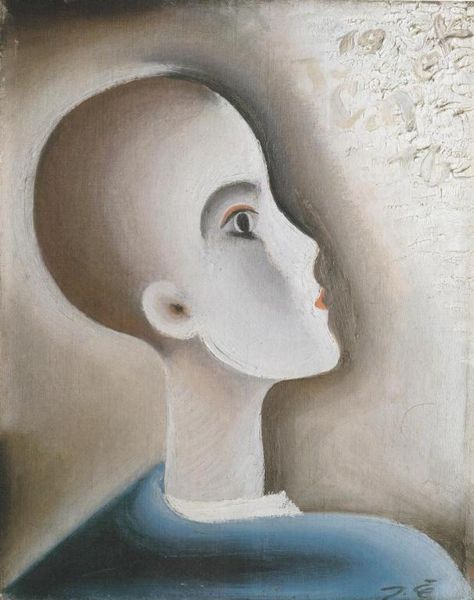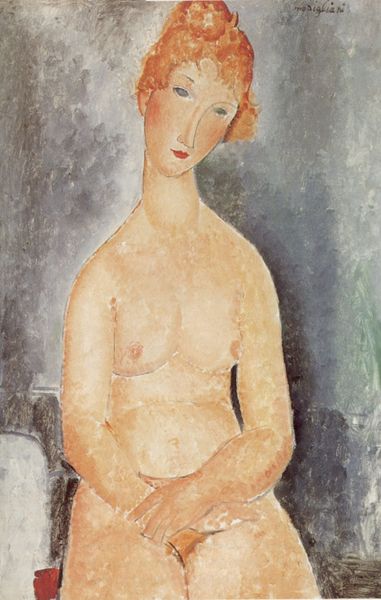
oil-paint
#
portrait
#
figurative
#
oil-paint
#
oil painting
#
italian-renaissance
#
modernism
Copyright: Public Domain: Artvee
Editor: So, this is Modigliani's "Portrait of Jeanne Hébuterne" from 1918, rendered in oil paint. There's something very melancholy about it, a sort of quiet sadness. The simplified forms and muted palette contribute to this mood, I think. What do you see in this piece? Curator: Melancholy, yes, a veil of pensive quiet, definitely. For me, the beauty lies in its raw vulnerability. Modigliani's portraits always felt like he was painting souls, not just faces. Notice how he elongates her neck, those almond-shaped eyes without pupils. It’s like gazing into a dream, isn’t it? Editor: Definitely. The blank eyes are particularly striking. It's as though she is looking inwards, lost in her own world. Is that a typical feature of Modigliani's portraits? Curator: Absolutely. It is like he’s stripping away the superficial, revealing a kind of elemental essence. Consider the historical context: this was painted near the end of the First World War. Paris, where Modigliani painted this, was filled with artists, poets, searching for meaning. Doesn't that resonate in the image, perhaps? A search for a more profound truth? Editor: That makes so much sense. The war adds another layer of sadness, a feeling of uncertainty. So it’s not just about Jeanne Hébuterne, but about a whole generation struggling to find its place? Curator: Precisely! It is, as you say, the echo of a generation's heartache, finding expression on a canvas. Art mirroring life, wouldn't you agree? Editor: Wow, I never considered the wider historical context like that before. Thanks; it really changed my perspective. Curator: My pleasure. Sometimes the deepest connection with art comes from feeling that pulse of shared humanity through time. Isn’t that amazing?
Comments
No comments
Be the first to comment and join the conversation on the ultimate creative platform.
